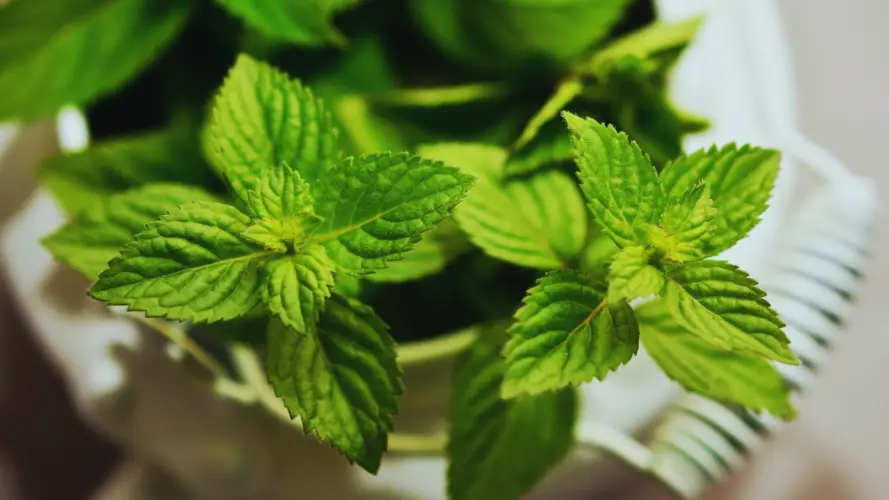Fact checked by Steven Lines, lifelong Hunter, and Outdoorsman .
.
We all know that elk love to eat. From grass to crops, there is almost no plant that is safe from the belly of a hungry elk. That being said, some people wonder if there are some plants that elk don’t want to eat. That will lead to the question: do elk like peppermint?
The answer is not as clear as other types of plants that elk eat. Elk have a different diet depending on the time of year and available food sources. While elk love to eat a wide variety of plants grown by humans, they don’t seem to care much for peppermint.
Elk love to eat most plants and crops that are grown by people, but peppermint does not seem to be amongst their favorites. Even though they are opportunistic feeders, peppermint does not grant them the same nutritional value or taste that other plants do. Continue reading to learn more about the crops that elk love to eat and why peppermint is not one of them.

In this post, we'll cover:
What Is Peppermint?
Peppermint is a strong-smelling herb that is in the mint family. It is well-known for its aroma and flavor that is used for ingredients in cooking, drinks, and personal care products. The plants themselves will grow anywhere from 2 to 3 feet tall with small, green leaves. Once they are fully grown, they will have purple or white flowers. Although it is a hardy plant, it is not very common to be grown anywhere where elk tend to live.
Peppermint is best known for its use in essential oil, which is extracted from the leaves and flowers. Because of its strong scent and taste, elk actually do not tend to care to eat peppermint, even when given the opportunity to do so. And because elk can eat a wide variety of different plants, they will opt to go find and eat something else instead of peppermint.
What Do Elk Regularly Eat?
Elk are large herbivores and need several pounds of plant material every day in order to stay alive. Their typical diet consists of different grasses, forbs, leaves, twigs, mushrooms, berries, and other types of vegetation. When it is possible for them, they will head down into farm fields in order to feed upon crops such as corn, alfalfa, canola, beets, and oats.
You will not typically see large fields full of peppermint like you would these other crops, so even if elk would eat it, they usually will never get the chance to do so because of how rarely it is grown in large quantities. It will also depend on what time of year it is. An elk’s diet will change depending on the season and the available food sources in the area.
Is Peppermint Harmful to Elk?
Although elk don’t care to eat peppermint when compared to other plants and crops, it is not necessarily harmful or dangerous for them to eat. It all comes down to preference and what provides the most nutrition and volume for the elk and their large stomachs. Again, every single elk will need several pounds of food per day in order to survive. A small plant such as peppermint will not give them as much as other crops will provide because of how rarely they are grown in large sections.
There are a few certain plants that humans grow that can be harmful to elk if they are consumed, especially in large supplies. You don’t have to worry about the peppermint plants that you are growing, however, as they will not harm any local wildlife.
Better Options for Baiting Elk
If you do live in an area where it is legal to bait for elk, peppermint will probably not be the best option. Instead, crops such as canola, carrots, alfalfa, oats, and barley are the most popular crops that elk tend to favor when they have the option. All of these plants can be eaten at various growing stages and provide the elk with plenty of nutritional value.
These other crops also give you more options after the harvest to bait elk, especially alfalfa, oats, and carrots. You can place these foods in a specific area that you want to attract elk to, ideally one where you can ambush them effectively. Again, not every area allows you to bait for elk, so ensure that you do your homework and know whether or not it is legal in your hunting zone. If it is, try to stick to an elk’s favorite foods and try to keep them as fresh as possible.
Continue updating and bringing more food every week or two to keep the elk returning to the area before the hunt begins. Once it does start, the elk should be in the habit of returning to the same area, expecting a quick and easy meal that you have been providing. This is when you can get a decent shot at the elk that you are after.
Final Thoughts
Many people wonder what plants elk eat and which ones they can use to attract elk during hunting season. Although peppermint isn’t an ideal option, there are plenty of great crops and plants that you can use as bait for elk that will work much better. Just make sure to do your homework and know where and when you can use bait for elk and happy hunting!

Steven Lines is a hunter and outdoorsman from Safford, Arizona, USA. Since he was a child, he has been hunting and fishing and has over 20 years of outdoor experience. Steven works as a hunting guide in Arizona during his spare time and runs a Youtube channel dedicated to sharing his outdoor adventures with others.
dedicated to sharing his outdoor adventures with others.
Sources
- https://shamrockpineshoa.com/wp-content/uploads/2018/07/Plantings-for-Elk-and-Deer.pdf

- https://www.democraticunderground.com/11595504

- https://solvepestproblems.oregonstate.edu/rodents-wildlife/deer-elk

